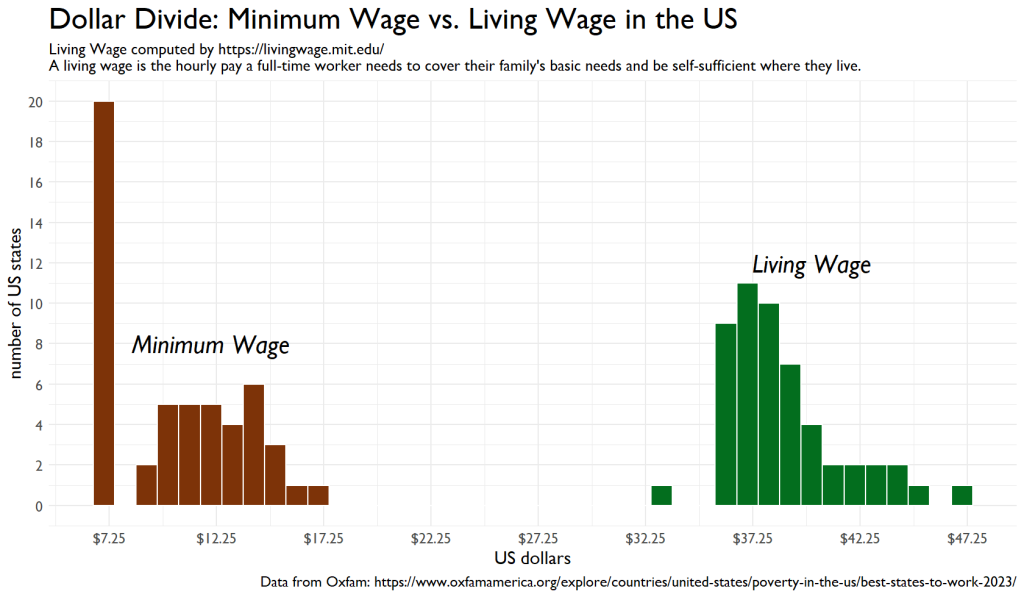The conversation surrounding the concept of a “living wage” has been gaining traction, making headlines as a viable tool to combat various social issues, including poverty, inequality, and adverse health outcomes. Let’s dig deeper and unraveling the connection between living wage, social determinants of health, and how this association could reshape approaches to community evaluation.
The Concept of Living Wage
Before we forge ahead, it is vital to establish what we mean by a ‘living wage.’ Unlike minimum wage regulations defined by governments, a living wage goes a step further. It is the minimum income necessary for workers to meet their basic needs, including housing, clothing, nutrition, and a little extra for unforeseen contingencies. This notion stems from the idea that individuals working full-time should be able to earn enough to support themselves and their families, mitigating the necessity for government subsidies or second jobs.
I examined some of the MIT and Oxfam data to examine the relationship between living wage and minimum wage. First, I just plotted a histogram of these values. In the figure below, we can see that is ZERO overlap between minimum wage and living wage. This mean that in no state will a minimum wage job be sufficient to live on.

Taking it a step further, I computed the correlation between these values. It was high: 0.67, t(50)=6.52,p<.001. This means that states with a higher minimum wage also have a higher living wage…so that’s good-ish news? Replicating a table from the Oxfam site, I plotted the ratio of minimum wage to living wage. We’d like to see numbers closer to one, so it’s a bummer that the best of our country only gets 40% of the way there.

The Nexus between Living Wage and Social Determinants of Health
Economic stability is a fundamental pillar of the social determinants of health. It directly affects an individual’s financial well-being, potentially alleviating the stress associated with economic hardship, a significant contributor to various health issues, including mental health problems and chronic diseases. Furthermore, those with sufficient income find it easier to secure housing in safe neighborhoods with adequate amenities, which can positively impact health by reducing exposure to environmental hazards and violent crimes while fostering community engagement and cohesion. Access to a decent income indirectly supports educational opportunities, as families can invest in quality schooling for their children, leading to improved job prospects and enhanced socioeconomic conditions for future generations. A higher income level also significantly influences nutrition, enabling families to afford healthy, nourishing meals—a vital aspect of maintaining good health and preventing diet-related illnesses such as obesity and diabetes. Moreover, a sufficient income can promote community and stronger social bonds, reducing social disparities, nurturing healthier relationships, and enhancing overall community well-being.
Evaluation Implications
Community-based research hinges on involving the community in discussions concerning wage policies, as their insights provide valuable real-world perspectives that enrich our evaluations. To fully grasp the extensive effects of adequate compensation, encouraging cooperation across sectors such as education, healthcare, and local government offers a diverse perspective that informs more effective strategies. Furthermore, community-based research is a robust instrument for advocating policy change by showcasing the concrete health advantages of fair wages, thus bolstering efforts to push for policy reforms.
Conclusion
A living wage can boost economic prosperity and contribute to healthier communities. Here at Dawn Chorus, we are dedicated to conducting pioneering evaluations to uncover these connections and support evidence-based interventions. Let’s create communities where people thrive, not just survive.

